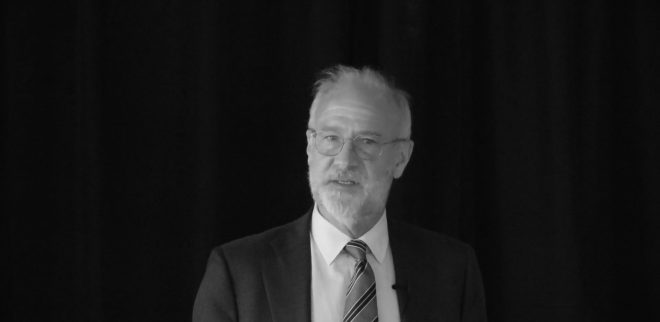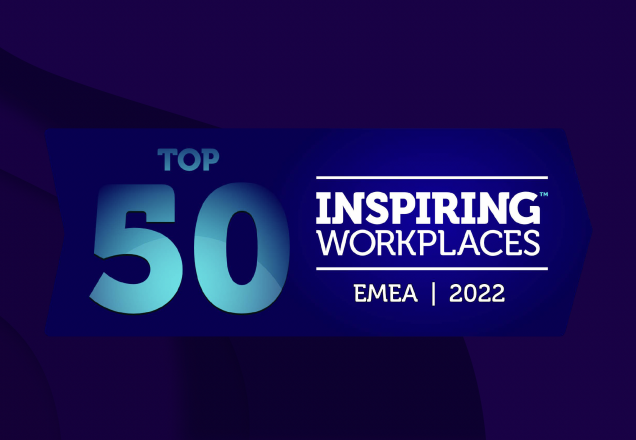
09th June 2025
The Recognition Ripple Effect: How Appreciation Drives Employee Engagement

This article was written by Taryn Hart, Content Marketing Manager at Kudos.
What does it really take to keep employees engaged today?
It’s not just competitive salaries, fancy offices, or endless perks. More and more, employees are seeking something deeper – to feel seen, valued, and connected to a bigger purpose. And at the heart of that need is one powerful, often overlooked tool: recognition.
Let’s rewind for a moment.
Picture two employees: One feels like their work disappears into a black hole. They hit deadlines, support their team, even go the extra mile – and hear nothing. The other regularly gets a simple “thank you” from their manager or a shout-out from a peer for a job well done. Who do you think is more motivated to show up, contribute creatively, and stay for the long haul?
No surprise – it’s the one who feels recognized.
Recognition is more than a pat on the back. It’s a catalyst for connection, performance, and long-term engagement.
How Recognition Leads to Higher Engagement
A strong recognition culture doesn’t just make people feel good. It directly improves individual performance and overall business outcomes. When employees feel appreciated, they’re more emotionally invested in their work. That emotional connection leads to:
- Higher productivity
- More creativity and innovation
- Better collaboration
- Reduced turnover
And we have plenty of proof for this:
- Employees who receive regular recognition are 7 times more likely to be highly engaged at work.
- Organizations with recognition programs see 31% lower turnover.
- Recognition-rich cultures lead to 23% higher profitability.
A study from Harvard Business Review found that employees were 40% more engaged when they received regular recognition from their manager. Not bonuses. Not extravagant perks. Just simple appreciation.
Recognition helps employees connect the dots between their daily tasks and the organization’s broader mission, turning routine work into contributions employees know matter.
And this is more important than ever. With hybrid and remote work reshaping the employee experience, the need for intentional, consistent acknowledgment has skyrocketed.
What Gallup Says About Creating a Recognition Culture
There are three essential behaviors leaders should embrace to build a culture that drives employee success:
- Recognize often. Make recognition a regular part of team meetings and one-on-ones. Frequent appreciation keeps morale high and performance strong.
- Listen actively. Every employee is different — tailor your leadership style to individual needs. When people feel heard, they feel valued.
- Champion employee growth. Advocate for your team’s ideas, support their development, and make sure they see a path forward.
Recognition is just one piece of the engagement puzzle, but it’s one that supports everything else: communication, trust, performance, and belonging.
Recognition in Action: Culture, Performance, and Retention
Organizations with the highest levels of engagement aren’t just lucky or great recruiters – they’re strategic. They build recognition into the everyday rhythm of work, creating cultures where people thrive.
ENGIE North America, for example, found a way to strengthen its culture and connection, all through recognition.
In 2020, ENGIE had gone through several acquisitions, tremendous company growth, plus a pandemic that introduced a new future of work. ENGIE’s culture was starting to decline, engagement levels tanked, and its best people were leaving the company.
In 2021, ENGIE partnered with Kudos®, a recognition and rewards platform, to help overcome these challenges and by 2023, ENGIE’s engagement survey score reached 91%. ENGIE is enhancing employee engagement and fostering a sense of community – all through the power of recognition.
ENGIE understands when leaders recognize contributions; it strengthens relationships, encourages collaboration, builds trust, and makes a workplace culture that naturally attracts top talent and inspires long-term loyalty.
Why Recognition Works (Hint: It’s Not Just About Rewards)
Employee rewards are a powerful tool when paired with recognition, but it’s important to remember that true recognition is about meaning and connection, not monetary value.
The most impactful recognition is:
- Timely – It happens close to the moment of achievement.
- Specific – It clearly explains what was done and why it mattered.
- Personalized – It acknowledges the individual and their unique strengths.
This kind of recognition acts as a powerful motivator. It reinforces the behaviors you want to see, builds psychological safety, and creates a shared sense of purpose.
The result? People feel valued and motivated to contribute their best – not just once, but continuously.
A Simple Framework for Building a Recognition Program
If your organization is ready to take recognition seriously (and you should be), here are five actionable steps to get started:
1. Evaluate Your Needs and Goals
Start by identifying what you want your recognition strategy to achieve. Is it boosting morale? Reducing turnover? Reinforcing your company values? Set clear objectives and consider how you’ll measure success.
Resource to help: A step-by-step guide to help build a culture of recognition.
2. Choose the Right Platform
Select a recognition platform, like Kudos, that aligns with your company’s culture, size, and existing tools. Kudos is a platform where recognition, rewards, people analytics, award programs, milestones and birthday celebrations are all in one place – a centralized hub to keep your engagement high and your culture initiatives thriving.
Resource to help: If you’re curious about what a recognition and rewards platform looks like, watch this live Kudos® demo for a brief walkthrough of the Kudos platform.
3. Get Leadership Buy-In
Recognition needs to start at the top. Share data and research with your leadership team in your business case, like: increased engagement, stronger culture, and improved performance.
Resource to help: Making a Case for Recognition has all the tips on how to pitch a recognition platform to your executive teams.
4. Launch with Intention
A successful rollout requires more than a software login. Create excitement with a clear communication plan, offer training for managers and employees, and consider early incentives to drive adoption. Encourage leadership to model the behavior you want to see.
Resource to help: This Leader’s Guide to Recognition outlines how managers can boost team performance through recognition.
5. Monitor, Learn, and Improve
Once your program is live, track usage and feedback. Are people engaging with it? Are there gaps in recognition? Use platform insights and employee feedback to refine your approach and keep recognition meaningful and impactful.
Resource to help: How to Increase Recognition in Your Workplace.
The Bottom Line: Recognition Is the Culture You Create
In a world where burnout is rising and employee expectations are shifting, recognition is a necessary strategic investment that should be part of your employee value proposition (EVP).
Done right, recognition fuels engagement, strengthens culture, and drives business results. It empowers people to do their best work and inspires them to stay. And perhaps most importantly, it reminds them, every day, that their contributions matter.
Whether you’re just starting to think about recognition or looking to evolve your approach, start with the simple idea that every person wants to feel appreciated.
Build on that, and you’ll build a workplace where people and performance thrive.








